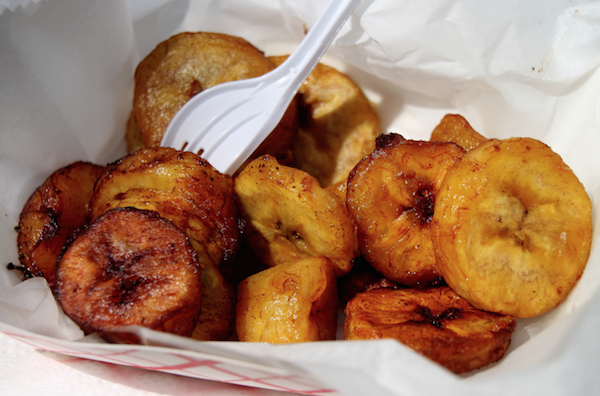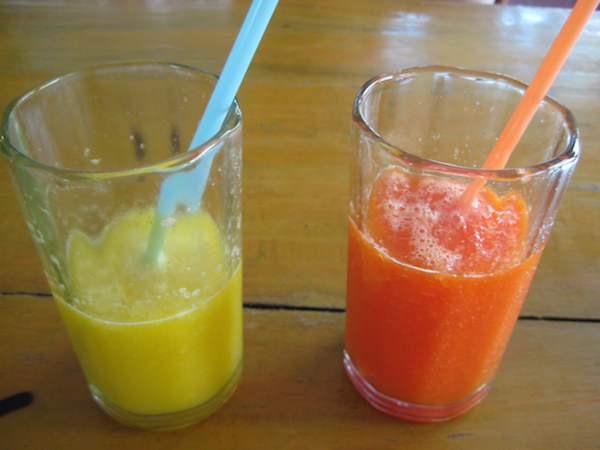The Vegan Guide to Guanacaste, Costa Rica
Photo by The LEAF Project/Flickr and Photo: Mr.TinDC/Flickr Food Lists Costa Rica
I’m a vegan who craves cheese. Particularly when I see a firm block of Parmigiano-Reggiano, or smell a really stinky brie. I have started to come around to nut-based alternatives and even borrowed a (self-help) book from the library on how to make my own at home. But I returned said book, forlorn, when I learned I needed to grow my own bacteria culture before getting started (!?).
When my family locked down a trip to the Guanacaste region of Northern Costa Rica, I anticipated surviving on papayas and guava. Fine by me. But when I learned about artisan cheese being produced a stone’s throw away, I felt somewhat taunted. Its proximity to the country’s largest cloud forest made it akin to a cheese factory in the sky, right? Provolone at heaven’s gates? I started to wonder if papaya and guava would be enough. After being a committed vegan for two years, would a creamy gouda do me in? How would I survive on a plant-based diet?
After composing myself a few days into our trip, I realized that the abundance of fresh fruits, vegetables, juices, grains and spicy salsas would make every meal a unique and delightful experience. All in all, I returned enlightened, well-fed and still a committed vegan. And I’ve learned that the cheese factory has since shut down, after 12 years of operation.
1. Gallo Pinto or “rice and beans”
This traditional and perhaps most common dish in Costa Rica is available throughout the day and often paired with pork, chicken or egg. While it’s definitely a simple dish, it’s enormously satisfying. And depending on the chef, the seasonings subtly vary from dish to dish to keep things interesting. I took a cooking class that taught me to prepare this back home—which I intend to do often. The black beans provide a good dose of protein, and the lonely side of the plate was always stunning with fresh or grilled vegetables, fried plantain or a green salad.
2. Plántano Photo: Mr.TinDC/Flickr
Photo: Mr.TinDC/Flickr
This cousin of the humble banana is a game changer when it’s seasoned and fried. It was a culinary highlight of our trip and I indulged most days (and at most meals). It becomes soft and sweet and pairs well as part of a comida with rice and beans. Plantain is also commonly sliced thinly, fried and sold as a snack similar to potato chips (plain or in flavours such as BBQ or salt and vinegar). Another family member—the yucca—is prepared in similar ways, although it’s not as sweet as plantain and doesn’t hold flavor quite as well.
3. Heart of Palm
Costa Rica doesn’t have the same variety of soy-based meat alternatives as North America. If I wasn’t such a veggie dog addict (Toronto is full of food carts that sell them), I’d say this is a good thing. Too much processed food is unhealthy—vegan or otherwise. But without the “fake meat” addition, what’s left to sink your teeth into? Enter heart of palm. This edible portion of the palm tree retains a firm texture and a taste that is similar to an artichoke. It can be added to a fresh salad and provides a good amount of nutrition and substance to the dish.
4. Salsa Lizano
This perky brown condiment is a Costa Rican staple and is found in most homes, eating establishments, backpacks, purses, etc. It’s been around since the 1920s and is to Costa Ricans what HP sauce is to the Brits. Although most commonly paired with gallo pinto (rice and beans), I found it brightened up just about anything. It’s not particularly hot, though it does have bit of spice in it from black pepper and cumin. While it’s not impossible to have this shipped internationally, it’s wise to stock up while in the country so you can enjoy back home.
5. Juice  Photo by Melanie M/Flickr
Photo by Melanie M/Flickr
The endless amount of fruit in Costa Rica make a Costa Rican juice bar the envy of any North American counterpart. The difference is that the juice is often blended, so there is more pulp than juices that have been cold pressed for instance. Fruit options include guava, mango, pineapple, guanabana and passionfruit. Vegetables are also popular juiced, including tomatoes, spinach and celery (which is popular paired with pineapple). All drinks are naturally plant-based and sugar is rarely added. A side-of-the-road must while traveling is pipa fria, cold coconut water. The seller will lob off a chunk at the top of the coconut with a machete and stick as straw in the top for you to drink. If you have a moment to linger, hand it back and they’ll hack the rest of it up so you can scoop out the soft coconut flesh from the inside—a culinary masterpiece!
6. Curry
Curries are popular in Costa Rica—made with meat or vegetables (i.e. tomato and artichoke). They are mild yet flavorful and are served with gallo pinto or plain rice. The abundance of chili sauces or spicy salsas mean that you’re in the driver’s seat when it comes to added heat.
7. International foods
Tourism is a major source of revenue for Costa Rica. It’s a breathtaking country, and the country’s commitment to preservation means that it’s an educational oasis. The abundance of different cultures has led to a growth of international foods around the country, particularly in the capital San Jose, and popular beachside towns along the coast. Many of these cuisines have vegan options, but it’s important to ensure that the dish doesn’t contain eggs or dairy (vegetarianos are more popular than veganos). I enjoyed a gorgeous pasta one evening with mushrooms and a pomodoro sauce. Another evening, I enjoyed fresh maki rolls with avocado and cucumber.